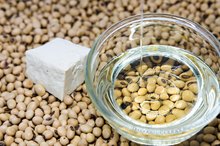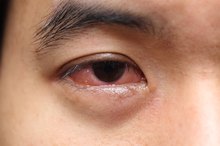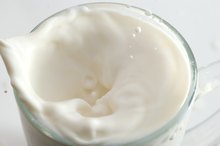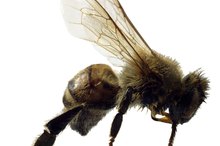What does fact checked mean?
At Healthfully, we strive to deliver objective content that is accurate and up-to-date. Our team periodically reviews articles in order to ensure content quality. The sources cited below consist of evidence from peer-reviewed journals, prominent medical organizations, academic associations, and government data.
- U.S. Food and Drug Administration; Food Allergy; June 2009
- MayoClinic.com; Food Allergy: Symptoms; February 2011
- MedlinePlus; Epinephrine Injection; September 2008
The information contained on this site is for informational purposes only, and should not be used as a substitute for the advice of a professional health care provider. Please check with the appropriate physician regarding health questions and concerns. Although we strive to deliver accurate and up-to-date information, no guarantee to that effect is made.
Can Food Allergies Cause Dry Skin and Hair Loss?
Millions of Americans experience allergic reactions to food every year, according to the Food and Drug Administration. The most common food offenders among adults include seafood, nuts and eggs. Consuming these foods can produce an array of symptoms, which may differ from person to person. Recognizing the signs and symptoms of a food allergy can help you avoid bothersome side effects and health complications.
If you are experiencing serious medical symptoms, seek emergency treatment immediately.
Food Allergies
Food allergies occur when your body perceives a certain food as a foreign invader and a potentially dangerous substance. In an effort to protect your body from the food culprit, your immune system overreacts and produces allergic symptoms. These symptoms are generally mild and can appear anywhere from minutes to two hours after you consume the allergic food.
Dry Skin and Hair Loss
Food Sensitivities and Ringing in Ears
Learn More
Common skin symptoms of food allergies include hives, itching and eczema, an anti-inflammatory skin condition that produces flaky, scaly or severely reddened skin. Food allergies are not likely to cause hair loss in humans, although it is a common symptom among allergic pets, namely dogs whose excessive chewing on itchy skin results in bald patches and hot spots.
Treatments
Because no cures exist for food allergies, the best way to avoid reactions is to eliminate the offending foods from your diet. In some cases, however, a person may unknowingly ingest an allergic food. When this happens, a doctor might prescribe antihistamines to treat symptoms. If a severe allergic reaction occurs, an emergency injection of epinephrine, a naturally occurring hormone, helps relax the airways and reduces tightening in the blood vessels 2. Follow-up treatment is essential after an epinephrine injection 2.
- Because no cures exist for food allergies, the best way to avoid reactions is to eliminate the offending foods from your diet.
- When this happens, a doctor might prescribe antihistamines to treat symptoms.
Warnings
Hydrogenated Soybean Oil Allergies
Learn More
Although allergic reactions are generally mild, some individuals experience a life-threatening reaction called anaphylaxis. This severe multisymptom response can cause shortness of breath, tightness in the throat and chest, rapid pulse and dizziness. Some people lose consciousness and die as a result. Seek immediate emergency medical treatment if these symptoms arise.
- Although allergic reactions are generally mild, some individuals experience a life-threatening reaction called anaphylaxis.
- Some people lose consciousness and die as a result.
Related Articles
References
- MayoClinic.com; Food Allergy: Symptoms; February 2011
- MedlinePlus; Epinephrine Injection; September 2008
- The American Academy of Allergy, Asthma and Immunology, and Food Allergy Practice Parameters. Ann Allergy Asthma Immunol. 2006; 96:S1-68.
Writer Bio
A health-care professional for more than 10 years, Rica Lewis has obtained numerous certifications in the industry. In 2006 she began channeling her knowledge into health-related articles for print and online publications. Her work has appeared in "Metroparent Magazine," "Anew Heart Healthcare Magazine" and community newspapers. Lewis earned a diploma from LongRidge Writers Institute.









